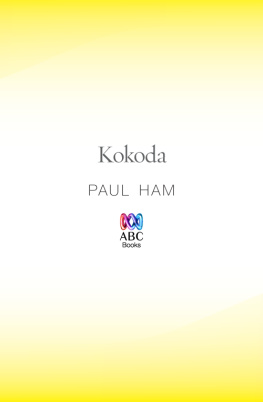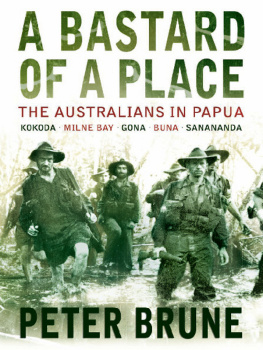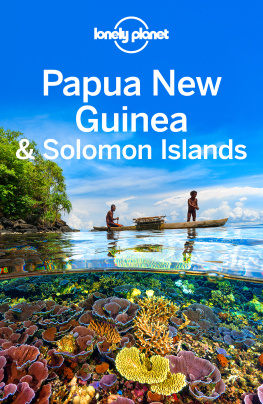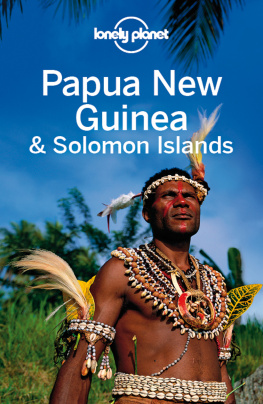Inevitably, in a book such as this, I am indebted to many people: Papua New Guineans and Australians; politicians, public servants, academics, journalists. They are too numerous to mention individually; a few would prefer not to be named. However, to four people I owe a special debt. They are Mr Jim Hall of the Australian Broadcasting Commission, Port Moresby, and his wife Jill; Mr Ted Wolfers of Macquarie University and formerly of Port Moresby; and Mr Ray Goodey, formerly of the Office of Information, Port Moresby. Without their help the book may not have been possible. Certainly it would have been poorer. But while their contribution was great, the responsibility is, of course, all mine.
The jacket illustration Father and child, Telefomin Sepik District is reproduced by kind permission of the Government Office of Information, Papua New Guinea.
Time Before
For centuries Papua New Guinea slept, undreamt of by the expanding nations of Europe. Over these long years the peoples slowly developed social structures and attitudes that the white man was to alter but could not erase. They were never one people. They appear to have come as a result of several migration waves spanning thousands of years, and to the differences in stock have been added the differences that the immensely varied terrain has imposed. The Tolai of the Gazelle Peninsula of New Britain is tall and powerfully built; the Motuan of the Port Moresby area is slim; the Highlander is short and stocky, the Trobriand Islander is the colour of milk coffee, while on the other side of the Solomon Sea the Bougainvillian is blue-black. The maritime tribes of the coast and islands are outward-looking people who sometimes developed elaborate trading patterns. The men of the Highlands tended to be inhibited by the immense, almost impenetrable mountains. For many of them the world, until recently, ended at the next ridge. The peoples developed intricate kinship structures and diverse rules governing land tenure and inheritance. The central feature was usually the extended family, which operated on a system of reciprocal obligations, now commonly known as the wantok (same language) system Linguists have identified about seven hundred languages.
In the beginning the white men came slowly. The first Portuguese and Spanish navigators simply skirted the island, roughly charting its outline. They were followed by the Dutch, British, and French. The contacts were brief, occasionally bloody. Only the edges of the great island were touched. Holland made the first great impact on the islands history by simply drawing a line down a shadowy map. In 1848 Holland proclaimed the area west of 141 degrees east to be Dutch territory. This action, like others that were to follow, was done without concern for, consultation with, or even the knowledge of the people concerned. It was done to secure the south-eastern approaches to Hollands flourishing empire in the East Indies. But by that act a million people were to pass out of the history of Melanesian New Guinea and into the history of Indonesia.
The white impact on the eastern half of the island became more substantial in the second half of the nineteenth century when European expansion was at its height. The early contacts were unofficial: traders, missionaries, and blackbirders chasing profits and souls. German companies, largely offshoots of the copra empire being built on Samoa, became dominant on the Gazelle Peninsula, the first area of heavy white involvement on the New Guinea side. Australians showed the greatest interest in the southern half. In 1884 the island was partitioned. Dr Otto Finsch sailed along the northern coast planting German flags. Commodore Erskine sailed into Port Moresby and hoisted the Union Jack. The border dividing German and British New Guinea was drawn laterally through the mountain chains of the interior. It was a cartographic convenience, for no white man had then seen the country it ran through. The division, like so many being made then, was done in the chancelleries of Europe for European diplomatic purposes. The partition was completed in 1899 when, as part of a settlement mainly involving Polynesia, Bougainville became German while the rest of the chain of islands to which it naturally belongs became the British Solomon Islands Protectorate. The boundaries of what was to become Papua New Guinea were now settled; the destinies of many peoples, still unaware of each others existence, were linked.
Australia was to assume responsibility for British New Guinea upon Federation. This it finally did, changing the name to Papua in the process, in 1906. Hubert Murray, the most important and enigmatic figure in Papuas colonial history, became Lieutenant-Governor, the post he was to hold until his death in 1940. In 1914, just after the start of the First World War, an Australian expeditionary force landed on the Gazelle Peninsula and, with the loss of five men, captured New Guinea. The territory was administered during the war by Australian military personnel and, after the post-war settlement, became an Australian administered territory under League of Nations mandate. The mandate was C class, which gave Australia a virtually free hand. The Prime Minister, Billy Hughes, regarded the arrangement as tantamount to the sovereignty he had originally sought. A succession of generals, none with any obvious qualifications for administering a colonial territory, headed the New Guinea Administration until the Second World War.
They were the lost days. Murray ran Papua with heavy-handed paternalism, doubt about the ability of Papuans ever to govern themselves, and virtually no money. But he did provide the Papuans with some protection from his more rapacious commercial compatriots. In wealthier New Guinea, where many of the German administrative traditions were continued, the planters, miners, and businessmen had a rather freer hand. They were the days of epic patrols into the interior to uncover gold, rich plantation land, and unimagined populations; of official Australian indifference so long as no enemy approached; of white enclaves vociferously demanding that the black be kept in his place; and of the blacks themselves, rarely considered except as units of labour, owners of land, and a shadowy threat to privilegeblacks bewildered and mute. They were also the days in which the different systems of government were to give added significance to the arbitrary boundary drawn through the mountains.





